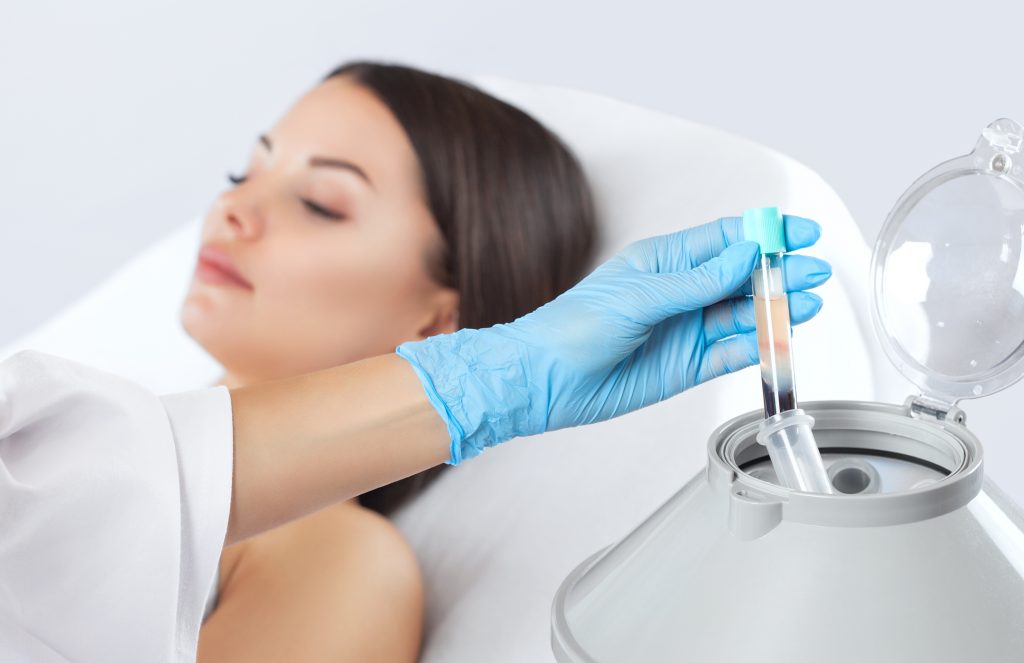PRP is a source of cytokines and growth factors that have the ability to increase and improve cell proliferation and differentiation, increase the synthesis of new vessels, and accelerate hyaluronic acid synthesis in fibroblasts.
These action mechanisms revitalize the skin, improve its hydration, prevent premature aging, and rejuvenate hair. It is one of the most innovative regenerative medical tools in anti-aging medicine, effective both in skin and hair. Dr. Ruth García Moro – Neolife Medical TeamPRP is obtained from the patient’s own blood through the use of a simple technique Growth factors are synthesized by different types of cells, such as fibroblasts, osteoblasts, endothelial cells, leukocytes, monocytes, and macrophages, and are stored as alpha granules in platelets and in the bones, attached to the bone matrix. To capitalize on the accumulation of growth factors in platelets, which are easy for us to obtain, and to make use of their properties at the localized level, simple techniques have been developed for this purpose.
- There is no risk of allergic reaction, as it comes from the body’s own cells (platelets).
- It can be combined with other treatments to enhance its effectiveness, such as hyaluronic acid, LED light, peelings, polycaprolactone, thread lifts, etc.
- It is used as a skin biostimulator in mesotherapy to treat wrinkles, elastosis, or dyschromia.
- When injected into the skin, it stimulates the production of new collagen and elastin in the fibroblasts, which improves sagging.
- It improves skin turgor through hydration by increasing the synthesis of hyaluronic acid.
- Overall, it restores skin vitality by increasing skin thickness, smoothness, elastic consistency, and vascular irrigation.
- Improvements occur both at the epidermal and dermal levels, achieving a healthier and younger appearance of the skin as a whole.
- It allows you to go about your normal routine after it is injected with micro needles.
- It is effective in both sexes.
- There are very few contraindications: thrombocytopenia or low platelet count, anticoagulant therapy, active infections, cancer, and pregnancy.
- In the prevention and treatment of alopecia and seasonal hair loss
- If there’s a direct history of alopecia
- If there is progressive loss of density and volume
- Before and after a hair graft
BIBLIOGRAPHY (1) Plasma rico en plaquetas: fundamentos biológicos y aplicaciones en cirugía maxilofacial y estética facial [Platelet rich plasma: biological foundations and applications in maxillofacial and facial cosmetic surgery]. Jordi Rodríguez Flores, María Angustias Palomar Gallego and Jesús Torres García-Denche. (2) Platelet rich plasma in dermatology and aesthetic medicine. Neerja Puri (3) Role of platelets and fibrine in healing synthesis. Ann Surg.

